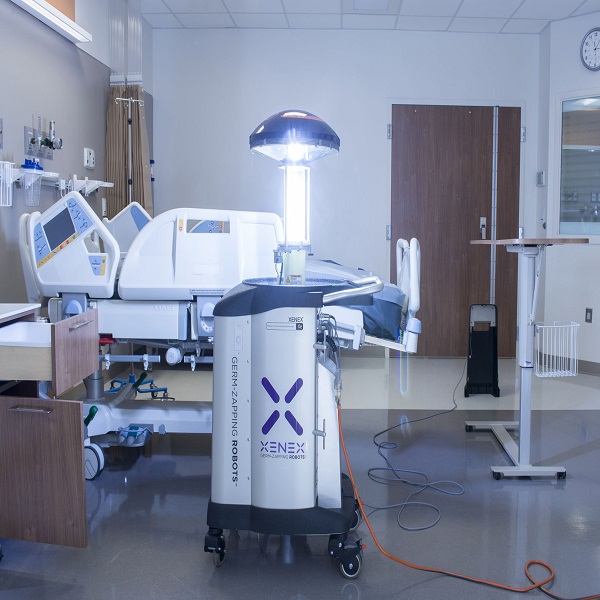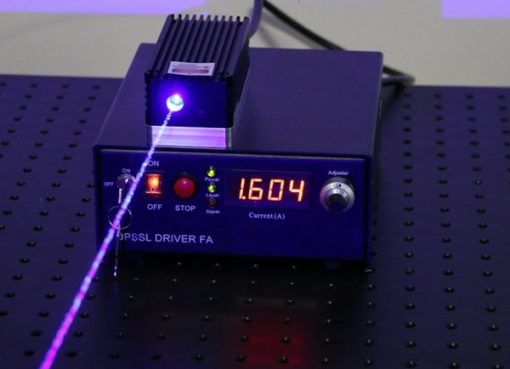As doctors continue to debate how the fast-spreading coronavirus rose to pandemic levels, a Texas medical engineering company claims their $125,000 “germ-zapping” robot may be our best hope on the front lines against the invisible enemy.
San Antonio-based Xenex developed a robot that tracks, disinfects and collects data on hospital-acquired infections. Now, the company hopes its LightStrike robot, a “full germicidal spectrum” UV light smart cleaning device, will be used to combat COVID-19.
The autonomous tech is already being used in some of the world’s best hospitals, including health-care facilities for the Department of Defense. And this week, the independent Texas Biomedical Research Institute announced that Xenex’s latest bot can deactivate 99.99% of SARS-CoV-2 in just two minutes.
In 2015, the lab shared similar praise, claiming the LightStrike killed Ebola in just 60 seconds.
“Our robots have been adopted as the environmental standard of care by many of the world’s leading hospitals because they work — and they work very quickly,” said Dr. Mark Stibich, chief scientific officer and co-founder of Xenex in a statement.
“We wanted our current and future customers to know with certainty that their pulsed xenon UV robots could stop COVID-19,” Stibich said.
Xenex was founded by two former Johns Hopkins epidemiologists in 2009, Stibich and Julie Stachowiak. Unlike similar infection-blasting bots, their innovation was proven to reduce certain infection rates by up to 100 percent, based on studies published in journals including the American Journal of Infection Control.
Whereas similar companies use pulsed mercury UV devices, Xenex touts their unique pulsed xenon UV technology, which is more efficient and environmentally friendly than the former method, the company’s CEO Morris Miller told Crunchbase News last month.
Since the coronavirus outbreak, Miller said they received “hundreds” of requests for their costly robot, namely from Italy as well as countries in Asia.
“We’ve been working seven days a week for the last three to four weeks,” Miller said. “In addition, we’ve seen an increase in orders from existing hospitals for robots for their emergency rooms.”
Xenex is now looking to fulfill bulk orders “in the thousands,” he added, and projects growth in 2020 to be somewhere between 400 and 600 percent.
Despite sticker shock, the company estimates that the $125,000 price tag breaks down to just $2 to $8 per room. And the cost wasn’t too much for a number of big name hospitals, including the University of Texas MD Anderson Cancer Center, the Mayo Clinic Health System, Stanford University, 55 Veterans Affairs (VA) facilities and 10 DOD health-care buildings, according to Xenex. The company reports that the LightStrike was also sent to countries on almost every continent.
Earlier this year, the spike in sales — thanks to the pandemic — prompted the company’s VP of sales Irene Hahn to email a somber memo to her colleagues, according to Forbes.
“At any other time, we celebrate these wins,” she said. “However, in light of what is happening, this one is different … we are absolutely humbled.”
Source: Nypost










